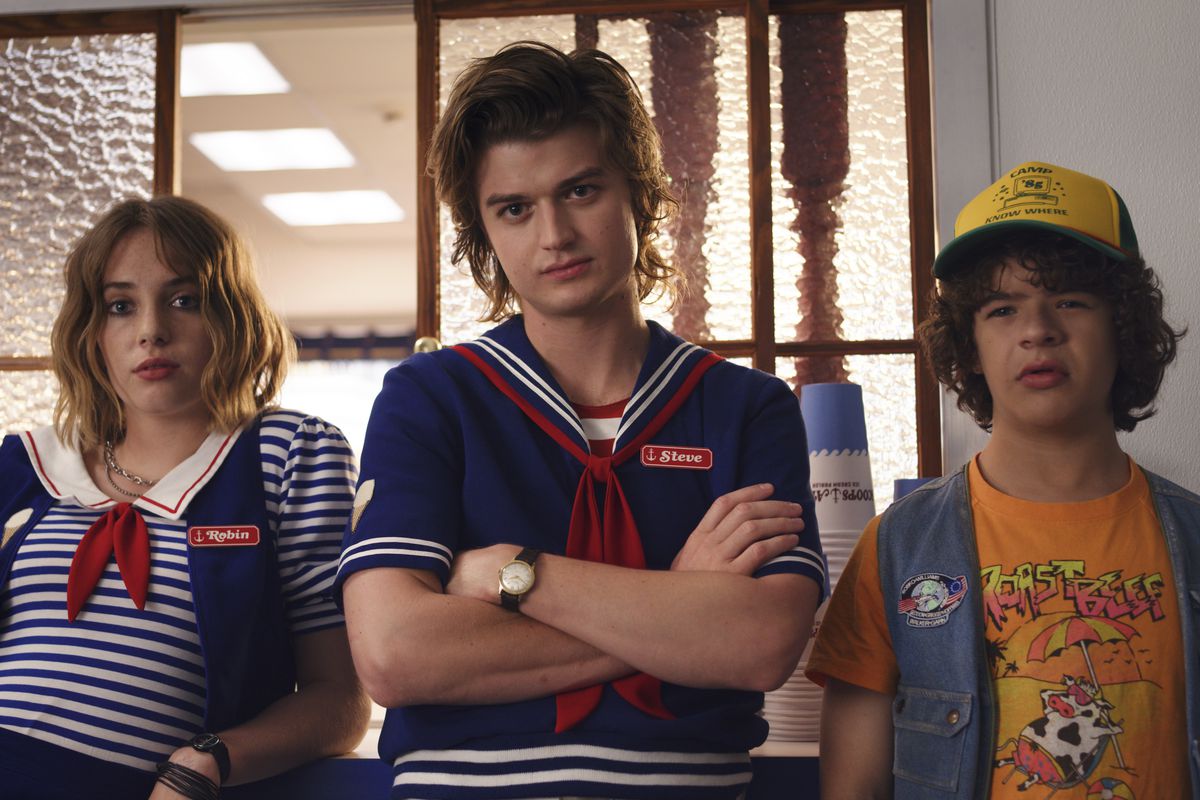
How does offering a worse viewer experience, rather than a better one help Netflix restore its lost subscription base, wonders “Streaming” columnist NICK OVERALL.
WISH Netflix was cheaper? Later this year it can be, for those willing to put up with ads.

The streaming giant announced it will partner with Microsoft to deliver a new, cheaper subscription option that brings back those pesky interruptions.
Netflix says they’ve been forced to “try other options” as subscribers continue to abandon the platform for other streaming competitors – a development that’s spooked its investors far more than any new season of “Stranger Things” ever could.
But can ads bring people back?
While this columnist isn’t willing to call it before Netflix announces the exact pricing, offering a worse viewer experience, rather than a better one, in an attempt to restore faith to the platform, does not set an optimistic precedent.
Why have people been cancelling their subscriptions?
On top of the monthly fees that have been climbing over the last few years, there’s just too much competition in the streaming market now.
Platforms like Disney Plus, Foxtel Binge, Amazon Prime Video, Apple TV Plus, Paramount Plus and more are all offering top-shelf TV, some for much cheaper than Netflix.
But the variety of choice for many has also become too much of a good thing.
If someone feasibly wanted access to every great show, they would have to foot 60 bucks a month for a subscription to every major platform. That may as well be cable TV, which is what we had 10 years ago and why Netflix became so enticing in the first place.
Many viewers are getting fed up with all the choice and are returning to piracy as streaming starts to resemble the traditional format of television it once broke away from.
The development is ironic, given new data shows Australians are now watching streaming more than they are free-to-air TV.
While Netflix hasn’t revealed how the ads would be implemented, it’s hard to see any model that would work well.
Take the traditional style, where TV shows were interrupted by ad breaks multiple times.
Episodes were often written into three very concise acts, split over 42 minute run times in order to incorporate these advertisements as smoothly as possible.
Writers would slyly structure their scripts to protect the plot as best they could, fitting ad breaks into deliberately written moments of down time.
But when streaming came along, creators were saved from having to worry about this. They were left to their own storytelling discretion, and able to make their shows as long or short as they thought the plot called for.
It’s why a season of something like “Stranger Things” contains eight episodes with vastly different run times. Some episodes are 90 minutes, some are 50, a stark contrast compared to a decade ago, where seasons of major TV shows often had more than 20 episodes, each running within strict hour-long time slots to hit the ad quotas.
Television storytelling has greatly benefitted from this creative freedom that streaming opened up.
Take a look at what “Fight Club” director David Fincher said about his buck-wild animated Netflix series “Love, Death and Robots”: “F– the movie stuff, let’s just take it to Netflix, because they’ll let us do whatever we want.”
Would the re-introduction of ads stifle such creativity? It’s possible, and it would be a shame to see that happen.
The other option for Netflix would be to run the ads before or after episodes, rather than during.
That would be better for the viewer, but Netflix would also be shooting itself in the foot, considering the whole “bingeing” model they’ve built over the years and why watching “just one more episode” has become so easy.
Maybe there’s a silver lining. Maybe interrupting television marathons would encourage people to take a break and go outside a bit more.
When called to justify the ads, a Netflix boffin said it was about meeting the demand for quality that subscribers have come to expect of the platform.
“We have to have an ‘Adam Project’ or a ‘Bridgerton’ every month, and make sure that’s the expectation of the service constantly,” he said in a presentation to shareholders.
Fair enough, in theory. But someone telling you why nine out of 10 dentists recommend a certain toothpaste in the middle of the next season of “Squid Game” doesn’t exactly speak wonders for the future of Netflix’s storytelling.
Who can be trusted?
In a world of spin and confusion, there’s never been a more important time to support independent journalism in Canberra.
If you trust our work online and want to enforce the power of independent voices, I invite you to make a small contribution.
Every dollar of support is invested back into our journalism to help keep citynews.com.au strong and free.
Thank you,
Ian Meikle, editor




Leave a Reply